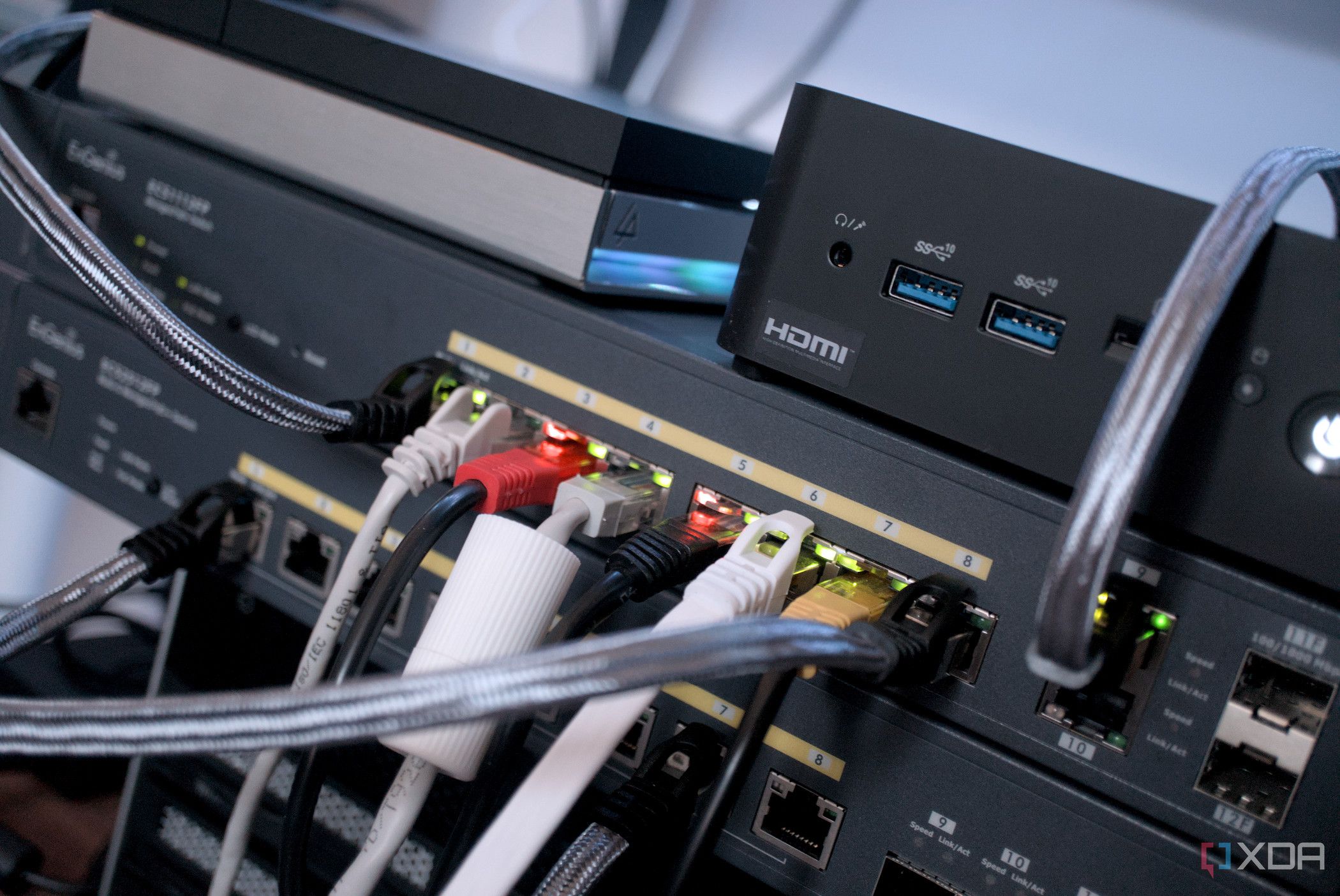Top Stories
Home Networks Made Easy: Build Enterprise-Grade Systems Now

URGENT UPDATE: New reports reveal that homeowners can now create enterprise-grade networks without the hefty price tag of prosumer equipment. This groundbreaking approach is transforming how individuals optimize their home internet setups, making reliable, secure, and scalable networks accessible to everyone.
As of today, experts emphasize that strategic planning is key to achieving a high-functioning network. Whether you are in an apartment or a larger home, understanding your networking needs is crucial. Many renters face limitations, such as not being able to run Ethernet cables through walls. However, innovative solutions like powerline adapters allow for seamless internet connectivity through existing electrical wiring, making it easier than ever to enhance your network without extensive installation.
The building blocks of an enterprise-grade network include a quality router/firewall, network switches, Ethernet cabling, and Wi-Fi access points. Notably, authorities suggest replacing the basic router provided by your Internet Service Provider (ISP) with a robust model like pfSense or OPNsense. These free, open-source systems enable users to customize their networks significantly, offering enhanced security and control over IoT devices. With options like the Intel N100, which is available for around $100, homeowners can create a powerful and efficient system that doesn’t break the bank.
Experts stress that even if you can’t replace your ISP router immediately, adjusting settings like DNS servers and enabling features such as MU-MIMO can dramatically improve your network’s performance. Many users are unaware that even minor tweaks can take their home networks to the next level.
To extend Wi-Fi coverage without splurging on new hardware, homeowners can repurpose old routers as access points. By disabling DHCP on these devices and linking them to the main router, users can save costs while still ensuring reliable coverage throughout their homes. Proper placement and channel planning are essential; access points should be positioned to slightly overlap, and set to non-overlapping channels to prevent interference.
Networking professionals recommend investing in a Network Attached Storage (NAS) system, which can significantly enhance data management and redundancy. Affordable options from companies like Synology or QNAP can upgrade your network’s capabilities by storing backups and media files efficiently. For budget-conscious users, repurposing an old PC or utilizing a Raspberry Pi can yield effective NAS solutions using software like TrueNAS or OpenMediaVault.
Security remains a top priority, especially for smart home devices that introduce vulnerabilities. Setting up VLANs can help segment IoT devices from the main network, providing an additional layer of protection. Most routers running OPNsense or pfSense offer user-friendly interfaces to manage VLANs and network configurations effectively.
Finally, experts highlight the importance of having a reliable power source. Using an Uninterruptible Power Supply (UPS) ensures that your network remains operational during power outages, protecting valuable data and equipment. Brands like APC and CyberPower offer budget-friendly UPS units that can be found for less than $200, providing peace of mind for network users.
Building a high-performance home network is now more attainable than ever. With strategic planning, affordable hardware, and smart configurations, individuals can create an enterprise-grade network that rivals professional setups. As the demand for robust home internet solutions grows, staying informed and making informed decisions is essential.
Stay tuned for more updates on home networking innovations, and don’t miss out on sharing these insights with friends and family who could benefit from creating their own efficient network solutions!
-

 Sports2 weeks ago
Sports2 weeks agoSteve Kerr Supports Jonathan Kuminga After Ejection in Preseason Game
-

 Top Stories7 days ago
Top Stories7 days agoMarc Buoniconti’s Legacy: 40 Years Later, Lives Transformed
-

 Science2 weeks ago
Science2 weeks agoChicago’s Viral ‘Rat Hole’ Likely Created by Squirrel, Study Reveals
-

 Politics2 weeks ago
Politics2 weeks agoDallin H. Oaks Assumes Leadership of Latter-day Saints Church
-

 Business2 weeks ago
Business2 weeks agoTyler Technologies Set to Reveal Q3 2025 Earnings on October 22
-

 Lifestyle2 weeks ago
Lifestyle2 weeks agoKelsea Ballerini Launches ‘Burn the Baggage’ Candle with Ranger Station
-

 Lifestyle2 weeks ago
Lifestyle2 weeks agoDua Lipa Celebrates Passing GCSE Spanish During World Tour
-

 Entertainment2 weeks ago
Entertainment2 weeks agoZoe Saldana Advocates for James Cameron’s Avatar Documentary
-

 Sports2 weeks ago
Sports2 weeks agoPatriots Dominate Picks as Raiders Fall in Season Opener
-

 Health2 weeks ago
Health2 weeks agoRichard Feldman Urges Ban on Menthol in Cigarettes and Vapes
-

 Health2 weeks ago
Health2 weeks agoCommunity Unites for Seventh Annual Mental Health Awareness Walk
-

 World2 weeks ago
World2 weeks agoD’Angelo, Iconic R&B Singer, Dies at 51 After Cancer Battle









